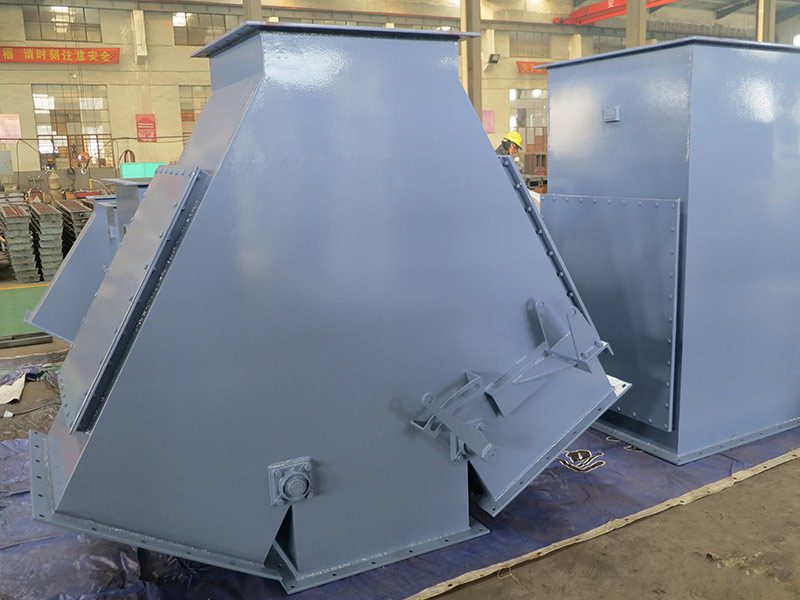In the intricate world of fluid control systems, from the climate control keeping your home comfortable to complex industrial processes, components work tirelessly behind the scenes. Among these crucial yet often overlooked elements stands the four-way diverter valve. This ingenious piece of engineering plays a pivotal role in directing fluid flow (liquid or gas) between multiple pathways, enabling complex system operations with remarkable simplicity and reliability. Understanding its function, applications, and importance is key for engineers, technicians, homeowners, and anyone involved in systems where flow direction dictates performance.
What Exactly is a Four-Way Diverter Valve?
Na sua essência, um four-way diverter valve is a directional control valve with four distinct ports: 1. One Inlet Port: Where the fluid enters the valve. 2. Three Outlet Ports (or vice-versa): Where the fluid can be directed. Crucially, a true four-way diverter valve only connects the inlet to one outlet at any given time. It diverts the flow from the inlet to a single selected outlet. The flow does not typically mix between the outlets directly within the valve body in its primary operating mode.
(Note: This sometimes causes confusion with “four-way reversing valves” common in HVAC heat pumps, which actively swap flow paths between two devices (like an evaporator and condenser). While often called “four-way valves,” their function of swapping connections between two pairs of lines is distinct from pure diversion. However, many industries still use “four-way diverter valve” to describe both diversion and full reversal types. For clarity, this article focuses primarily on the diverter function but acknowledges the HVAC application overlap.)
The magic happens inside. The valve contains a moving element – often a rotating ball, a sliding spool, or a poppet mechanism – controlled by an actuator. This actuator can be: * Manual: Lever or knob turned by hand. * Electric: Solenoid coil(s) energized/de-energized. * Pneumatic: Using compressed air pressure. * Hydraulic: Using fluid pressure.
How It Works: The Simple Power of Diversion
Imagine a central hub (the valve) with one main road (inlet) arriving and three possible exit roads (outlets A, B, C). The four-way diverter valve is the traffic controller:
- Flow Entry: Fluid under pressure enters the single inlet port.
- Diversion: The valve’s internal mechanism (controlled manually or automatically) positions itself to connect the inlet only to one of the three outlet ports (e.g., Outlet A).
- Flow Path: Fluid flows directly from the inlet through the valve’s internal passage and out through the selected outlet (Outlet A).
- Changing Flow: When a signal is given (e.g., a thermostat call for change, a manual lever turn, a timer cycle), the actuator moves the internal mechanism. It disconnects the inlet from the previous outlet (Outlet A) and connects it to a different outlet (e.g., Outlet B or C).
- Dead Volume: The non-selected outlets are typically isolated from the inlet and often from each other. Any fluid remaining in the lines beyond the valve toward non-selected outlets is “dead volume” and not actively flowing.
This ability to select one pathway out of multiple options based on system demands is the essence of the four-way diverter valve.
Key Characteristics and Design Considerations
- Flow Capacity (Cv): A critical specification denoting the valve’s ability to pass fluid with minimal restriction. Proper sizing is essential for system efficiency.
- Pressure Rating: The maximum pressure the valve body and seals can withstand.
- Temperature Rating: The range of fluid temperatures the valve materials and seals can handle.
- Port Size and Connection Type: Must match the existing piping (e.g., NPT, BSPP, flange).
- Sealing Technology: Vital for preventing leaks between ports. Common seals include PTFE (Teflon), EPDM, Viton, depending on the fluid and temperature.
- Actuator Type and Speed: Impacts control logic and response time (Manual vs. Electric Solenoid vs. Pneumatic).
- Body Material: Brass, stainless steel, cast iron, or engineered plastics, chosen for compatibility with the fluid, pressure, and environment.
- Valve Type: Ball valves offer low torque, high flow, and bubble-tight shut-off but limited to on/off diversion. Spool valves can sometimes be designed for proportional flow or more complex routing but may have higher leakage potential. Poppet valves offer excellent sealing but are typically binary (on/off).
- Position Indication: Important for manual and automated valves to confirm the active flow path (visual indicator, electronic feedback).
Where Four-Way Diverter Valves Shine: Applications Galore
O four-way diverter valve finds indispensable roles across numerous industries due to its fundamental function:
Hydronic Heating & Cooling Systems: This is a primary home for diverter valves.
- Zone Control: Diverting boiler flow to different heating zones (radiators, underfloor loops) based on thermostat demands.
- Domestic Hot Water (DHW) Priority: Diverting boiler flow to the hot water cylinder when there’s a demand for taps/showers, temporarily pausing space heating flow.
- Solar Thermal Systems: Diverting solar-heated fluid to the storage tank when usable heat is available, or alternatively, routing to a heat dump (like a swimming pool) or bypassing the collectors when not needed.
- Buffer Tank Management: Diverting flow to charge or discharge a thermal storage buffer.
HVAC Systems (Including Heat Pumps):
- Heat/Cool Mode Switching (The “Reversing Valve” function): Although technically reversing flow direction between evaporator and condenser, heat pump reversing valves are often categorized within four-way diverter valves. This is arguably the most critical application, enabling a single system to provide both heating and cooling by changing the refrigerant flow path.
- Dehumidification Mode Diversion: Directing refrigerant through reheat coils.
Industrial Process Control:
- Diverting process streams to different reactors, storage tanks, or waste lines.
- Sampling systems: Diverting flow to an analytical instrument.
- Equipment Isolation & Flow Path Selection: Routing fluid to different machines or testing stations.
- Batch Processing: Directing materials to different mixing tanks.
- Coolant/Cleaning Fluid Diversion: Routing fluids to different machine tool heads or cleaning stations.
Water Treatment & Filtration:
- Filter Backwashing: Diverting flow backwards through a filter bed to clean it.
- Diverting water to different treatment stages (sand filter, carbon filter, UV).
- Bypass Modes: Diverting flow around a filter or treatment unit during maintenance.
Irrigation Systems: Diverting water flow to specific irrigation zones or sprinkler circuits.
- Fuel Delivery Systems: Diverting fuel types (e.g., diesel, biodiesel) or delivery locations.
- Laboratory Equipment: Controlling fluid paths in analyzers and automated testing rigs.
| Common Four-Way Diverter Valve Applications | Primary Function | Key Requirements |
|---|---|---|
| Hydronic Zone Control | Direct boiler water to specific heating zones (radiators, underfloor) | Reliable sealing, good flow capacity, durable actuator |
| DHW Priority (Hydronics) | Temporarily divert boiler flow entirely to hot water cylinder | Fast switching, low leakage, high temperature sealing |
| Solar Thermal Systems | Divert solar-heated fluid to storage tank OR dump/return | High temperature capability, reliable actuator control |
| Heat Pump Reversing Valve | Swap refrigerant flow paths between evaporator/condenser | Refrigerant compatibility, high pressure rating, fast/reliable switching |
| Industrial Process Diversion | Route process liquids/gases to different lines/equipment | Chemical compatibility, pressure rating, precise control, reliability |

Benefits of Using Four-Way Diverter Valves
- Simplified System Design: Achieves complex flow routing with a single component, reducing the need for multiple valves and complex piping.
- Enhanced Control & Automation: Enables automated routing decisions based on sensors, timers, or controllers.
- Eficiência energética: Allows systems to only send fluid where it’s needed, reducing pump load and energy consumption (e.g., zoning, solar diversion).
- Space Savings: Often more compact than equivalent configurations using multiple two-way or three-way valves.
- Custo-eficácia: While potentially more expensive than a single simple valve, replacing multiple valves and fittings can lower overall installed cost.
- Functionality: Enables critical functions like heating/cooling mode switching (HVAC) or DHW priority that are impossible with simpler valves.
Selecting and Maintaining Your Four-Way Diverter Valve
Choosing the right valve is critical:
- Define the Application: Fluid type? Temperature/Pressure? Flow Rate? Required switching speed? Is it pure diversion or reversal (like HVAC)?
- Material Compatibility: Ensure body and seals are compatible with the fluid (chemical resistance).
- Sizing: Match port size and flow coefficient (Cv) to system requirements. Undersizing causes high pressure drop; oversizing is inefficient and costly.
- Actuator Selection: Manual is cheap but impractical for automation. Solenoid is common for fast on/off. Pneumatic offers robustness and power for larger valves. Consider voltage (AC/DC), torque requirements, and duty cycle.
- Seals: Choose based on temperature and chemical compatibility. PTFE is common for high-temp and broad chemical resistance but can be stiff.
Maintenance is key for longevity and reliability:
- Regular Inspection: Check for leaks (at ports and stem), listen for unusual noises during actuation.
- Operational Check: Verify switching function periodically (manual actuators easily; automated may require system test).
- System Cleanliness: Particulates or sludge cause valve sticking or seal wear. Use filters upstream if necessary.
- Seal Replacement: Be prepared to replace seals periodically depending on duty cycle and fluid type (usually part of routine maintenance).
Troubleshooting Common Issues:
- Leakage: Worn/damaged seals, damaged valve body seating surface, over-tightening connections. Replace seals or valve.
- Valve Not Switching: Failed actuator (solenoid burned out, pneumatic pressure loss), mechanical binding (debris, sludge, corrosion), insufficient operating pressure differential. Check power/air supply, free movement, clean if possible.
- Incomplete Switching / Slow Operation: Weak actuator (solenoid, spring), increased friction (dirty stem, damaged seal), low operating pressure. Clean, lubricate (if specified), check actuator power/torque.
- High Pressure Drop: Undersized valve or clogged valve body.
The Future: Smart Diverter Valves
Like many components, four-way diverter valves are evolving. Integration with IoT (Internet of Things) platforms is emerging, allowing: * Remote monitoring of valve position and operating hours. * Predictive maintenance alerts based on operating cycle counts or torque sensing. * Direct integration with smart home or building management systems for advanced control algorithms. * Energy monitoring tied to flow diversion.
Conclusion: Directing the Flow of Efficiency
O four-way diverter valve, though often hidden within mechanical rooms or equipment housings, is a fundamental enabler of efficiency and functionality in countless fluid systems. By precisely routing flows between multiple pathways, it simplifies complex designs, saves energy, provides essential comfort (as in HVAC reversal), and automates critical processes. Whether you’re a homeowner wondering how your heat pump changes modes or an engineer designing an intricate industrial plant, understanding the role, selection criteria, and maintenance needs of this versatile valve is essential. Choosing the right four-way diverter valve ensures smooth, reliable, and efficient operation, silently directing the flow that keeps systems running optimally.

